YOU ARE LEARNING:
Translation
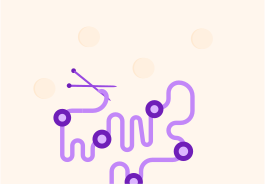
Translation
Translation is the second stage of protein synthesis. The process takes place in organelles such as the ribosome, where tRNA molecules help to join amino acids to form proteins.
Translation is the second stage of protein synthesis. What is the first?

Once created during transcription, the mRNA molecule leaves the nucleus and travels to another organelle. Which organelle is that?

Once the mRNA strand leaves the nucleus and arrives at the ribosome, the mRNA passes through it...
a bit like threading a piece of string through a needle. The ribosome is the site of protein synthesis, which processes a strand of mRNA, to produce a protein.
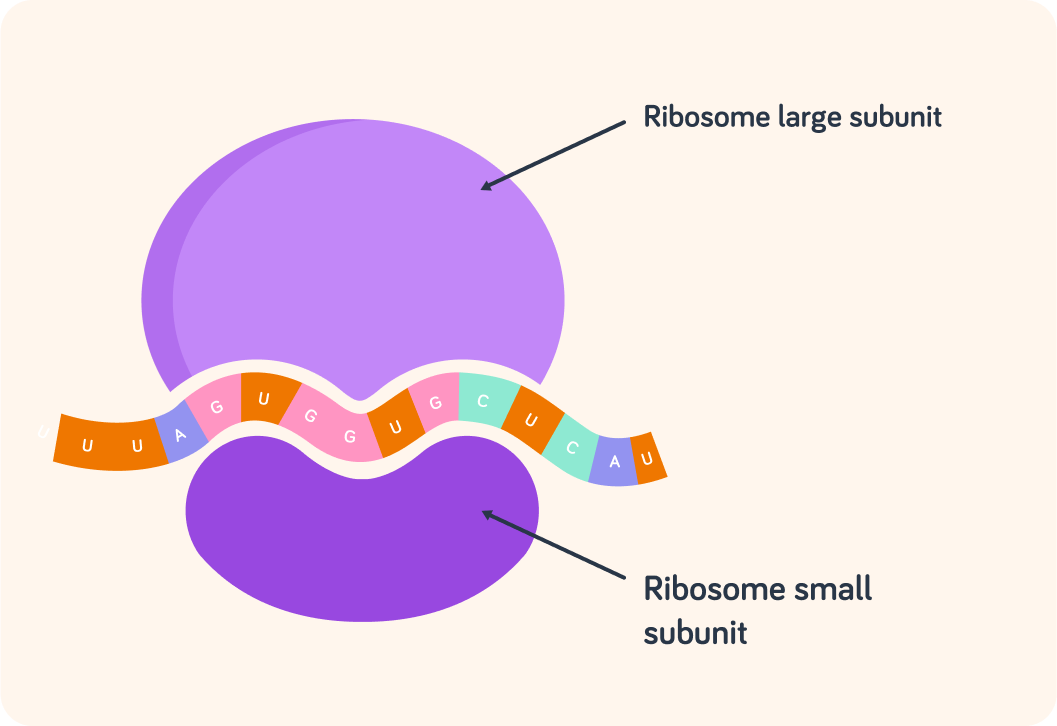
So the mRNA is processed by the ribosome. Each three bases (triplets) of the mRNA strand code for a particular amino acid. What other name is given to these triplets?

Another important molecule in translation is the tRNA molecule. They work in the ribosome to carry specific amino acids to the codons in mRNA, where they will join to make a protein.
The CUG triplet on the tRNA molecule has a specific name. What do you think this is?
A) Anticodon B) Negative codon C) Positive codon


A transfer RNA (tRNA) molecule has its own specific anticodon, which is responsible for recognising a complementary codon on the mRNA molecule. The tRNA molecule is carrying a larger molecule with it (green structure). What do you think this is?
A) A protein B) A base C) An amino acid


The amino acid that the tRNA molecule carries isn't random.
The specific amino acid is coded for by the codon of mRNA. Certain amino acids will only join to a tRNA molecule with the correct anticodon.

If an mRNA codon has the bases GAU (codes for the amino acid aspartic acid), what do you think the tRNA anticodon would be?

You can refer to the bases in a codon, which code for a particular amino acid, with a certain term. What do you think that is?

So for example, you could say the triplet code for lysine is AAA. Most amino acids have at least two triplet codes. The other one for lysine is AAG. Some amino acids, such as arginine have 4 (CGU CGG CGA CGC)! This gives the code some redundancy.
Arginine's four triplet codes are CGU, CGG, CGA and CGC. What do you notice about the triplet codes coding for the same amino acid? Pick 2 answers you think are correct.

You can select multiple answers
So, once the anticodon on the tRNA molecule has joined to a codon on the mRNA molecule, the amino acid on the tRNA molecule will join with a neighbouring amino acid on a neighbouring tRNA molecule.
The amino acids bond together to form a chain, and the tRNA molecule will detach, and leave the ribosome to find another specific amino acid to join with.
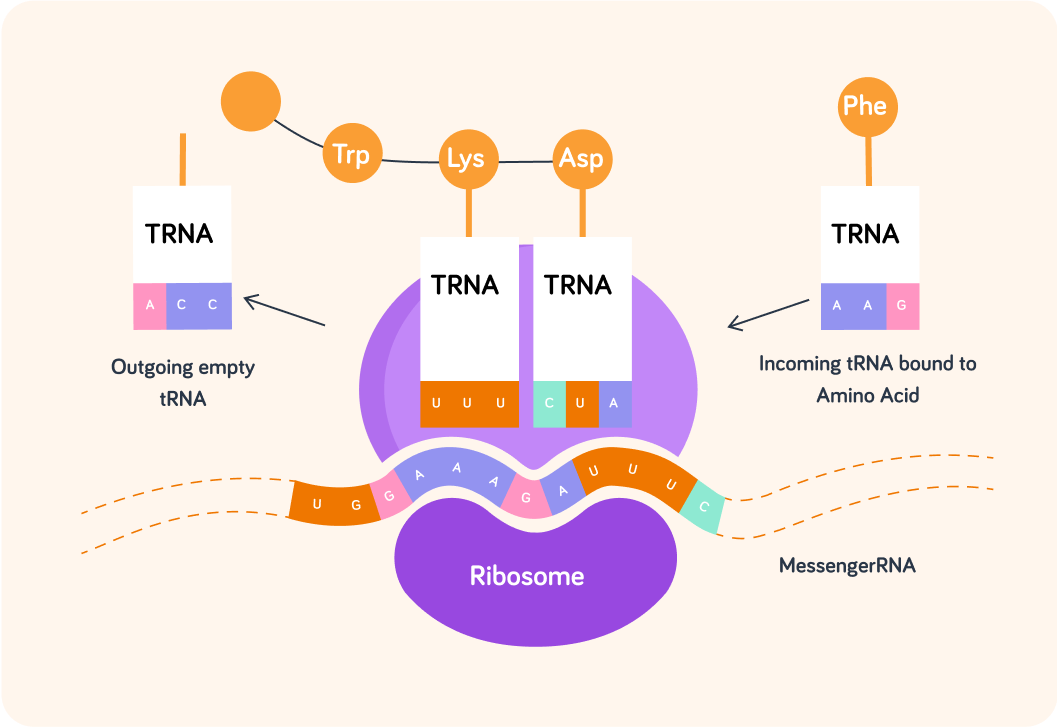
A long chain of amino acids is a "polymer" - a compound with repeating units bonded together in a chain. What do you think it's called?
A) A multipeptide B) An aminopeptide C) A polypeptide


What do you think the term is for the bonds in between the amino acids in the polypeptide?

After translation...
the polypeptide is folded to create a protein. This is done by bonds forming between amino acids.
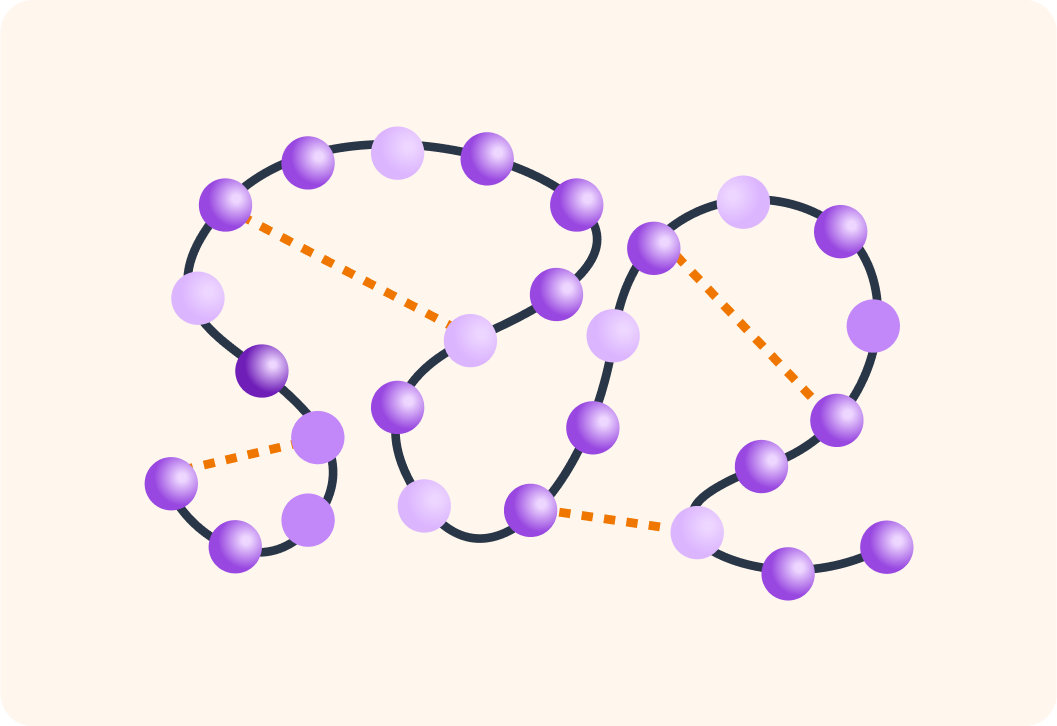
To recap on translation! The mRNA molecule exits the nucleus...
and attaches to a ribosome.
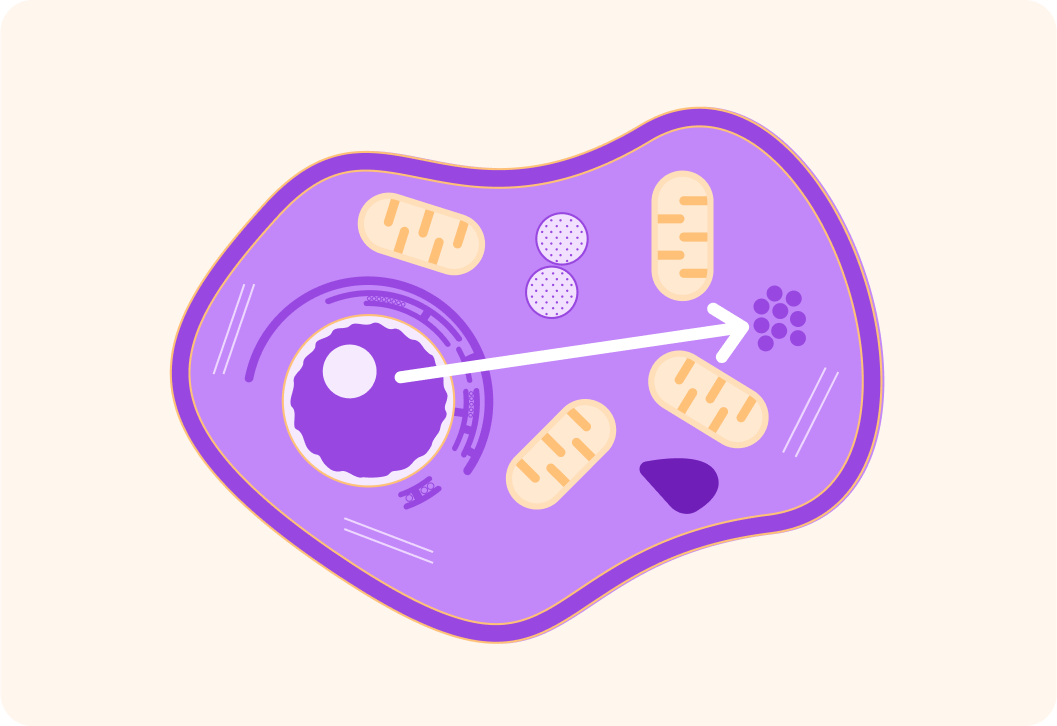
tRNA molecules with certain anticodons...
recognise a complementary codon on the mRNA molecule, each bringing with it a specific amino acid.

Neighbouring amino acids...
join together by peptide bonds to form a polypeptide.

The polypeptide is shaped into a protein...
by peptide bonds between the amino acids folding it into a specific shape.

This protein will be shaped to provide a specific function in the body...
such as a hormone, enzyme, antibody or structural protein like collagen.

